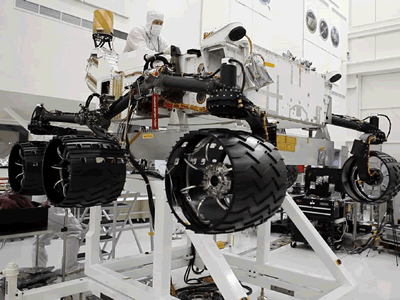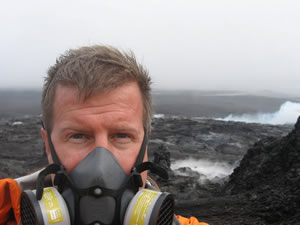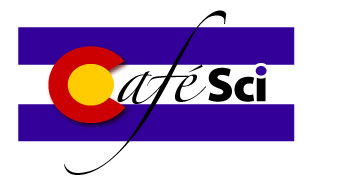About the topic
Bio
Get the Flyer (pdf)
About the topic
 At 10:02 on 26 November an Atlas V launch vehicle took off from Cape Canaveral carrying the Mars Science Laboratory with its enormous rover, Curiosity. If all goes well (and so far it has) the payload will arrive at its destination in about 8 months (August 2012), Mars being about 240 million kilometers away.
At 10:02 on 26 November an Atlas V launch vehicle took off from Cape Canaveral carrying the Mars Science Laboratory with its enormous rover, Curiosity. If all goes well (and so far it has) the payload will arrive at its destination in about 8 months (August 2012), Mars being about 240 million kilometers away.
NASA says: During the 23 months after landing, Curiosity will analyze dozens of samples drilled from rocks or scooped from the ground as it explores with greater range than any previous Mars rover. Curiosity will carry the most advanced payload of scientific gear ever used on Mars' surface, a payload more than 10 times as massive as those of earlier Mars rovers. Its assignment: Investigate whether conditions have been favorable for microbial life and for preserving clues in the rocks about possible past life.
The spacecraft has been designed to steer itself during descent through Mars' atmosphere with a series of S-curve maneuvers similar to those used by astronauts piloting NASA space shuttles. During the three minutes before touchdown, the spacecraft slows its descent with a parachute, then uses retro rockets mounted around the rim of an upper stage. In the final seconds, the upper stage acts as a sky crane, lowering the upright rover on a tether to the surface. Curiosity is about twice as long (about 3 meters or 10 feet) and five times as heavy as NASA's twin Mars Exploration Rovers, Spirit and Opportunity, launched in 2003. It inherited many design elements from them, including six-wheel drive, a rocker-bogie suspension system and cameras mounted on a mast to help the mission's team on Earth select exploration targets and driving routes. Unlike earlier rovers, Curiosity carries equipment to gather samples of rocks and soil, process them and distribute them to onboard test chambers inside analytical instruments.
Although there's hardly any water on the surface of Mars at this time, the geologic evidence from many satellites and visiting rovers indicates beyond a doubt that there once was enough to form canyons and sedimentary layers, very similar to those on Earth. Were there lifeforms in that water? Are any still there that we can recognize? And maybe the most exciting question since our existence: Is anything there still alive??
(Read the rest of this fascinating story -PDF) or visit JPL's highly informative pages.Bio

Brian M. Hynek writes: I am an Assistant Professor in the Department of Geological Sciences and a Research Associate at the Laboratory for Atmospheric and Space Physics, both at the University of Colorado. My main research interests are the geologic, hydrologic, and climatic histories of the planet Mars and all things related. In particular, I work on problems dealing with past fluvial erosion on Mars, Martian volcanoes, geologic mapping, habitable environments, aqueous geochemical modeling, and terrestrial analog work. New data, including high-resolution topographic data and images, are shedding light on the planet Mars and upcoming missions will continue to change our perceptions of this planet. Before we die, we will likely have answered one of the greatest questions: Are we alone? I want to be part of that grand effort.
Brian earned his Ph.D. in Earth and Planetary Sciences at Washington University, St. Louis, MO. Before that he got his AM in Earth and Planetary Sciences, also at WUSTL, and a BA in Earth Science, Earth Science Education, and All Sciences Education, from the University of Northern Iowa, Cedar Falls, IA. He received a NASA Early Career Fellowship in 2007, was selected for the 2008 National Academy of Sciences Kavli Frontiers of Science Symposium, and received the 2008 American Institute of Aeronautics and Astronautics (AIAA) Abe M. Zarem Educator Award for excellence in student advising.
His recent research has focused on the geologic, geochemical, hydrologic, and climatic evolutions of the planet Mars. He has been studying the Meridiani hematite site and other regional layered deposits that contain sulfate minerals and their astrobiological potential. Brian conducts Mars analog work on acid-sulfate systems including within active Nicaraguan volcanoes. He also has research interests in Martian drainage morphometry, the thermophysical properties of Mars, and the physics of volcanic eruptions on other planets. Brian teaches undergraduate and graduate courses at the University of Colorado covering topics such as the geology of the solar system, astrobiology, and geographic information systems.
